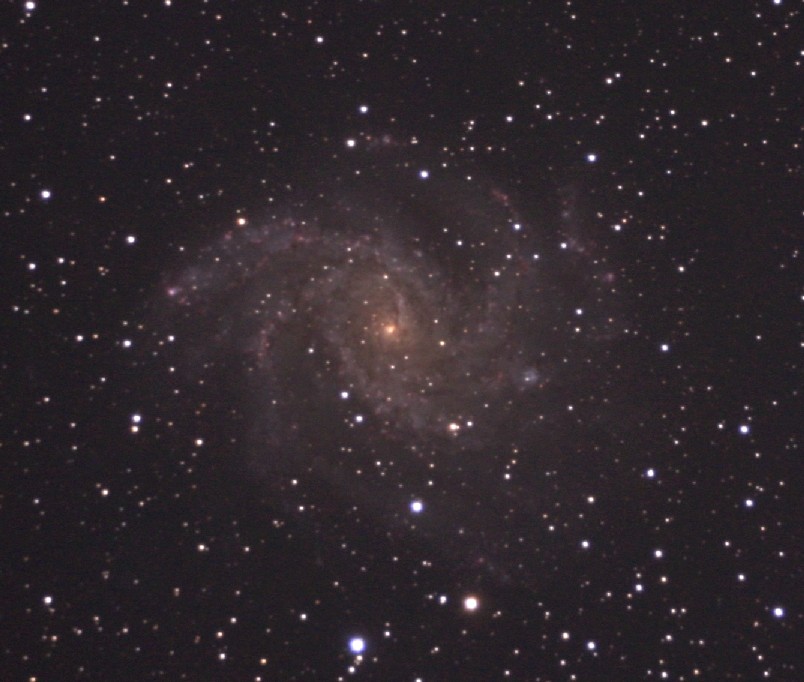
|
|
| C12, or NGC6946 a spiral galaxy. Image above cropped from the original. |
|
This galaxy is only 12 million light years away. Only ??! Well kind of..... Here's a visual example of the distance and size scale. If you're a 6 foot tall father, standing about 2 football fields away would be your 4 year old son. C12 is less than 1/2 as big as our galaxy, (40,000 light years across compared to our Milky Way's 125,000) but because of it's relative nearness we can see it fairly easily. Notice the sky isn't very dark around it. That's not because of light pollution, but because C12 is on the other side of our galaxy, and we're seeing it through a lot of the dust, debris, stars, and a lot of the interstellar gas of our galaxy. That's why the center area appears yellowish instead of the bright white it actually is. Although it's smallish, it's a bright galaxy. Even with less than half as many stars as us, it's total light output is greater than our galaxy. It's much more active than our galaxy. More supernovas (9) have gone off in it in the last hundred years than in any other galaxy commonly visible with amateur equipment. The reddish fuzzy areas around in the spiral arms are large regions of fairly dense hydrogen gas inside of which stars are forming. At about the 3:30 position out from the center is a small fuzzy light colored area. There is a star at it's 7:00 o-clock position. Disregard that star because it's a foreground star from our Milky Way. In the light colored area, star formation occurred earlier than the reddish areas. The intensity of the starlight and solar wind of those stars has by now blown away the nursery gas in which they were formed. |
|
10" F6.3 SCT telescope,
Modified (sensor chip's filter removed) Canon 40D at Prime focus |